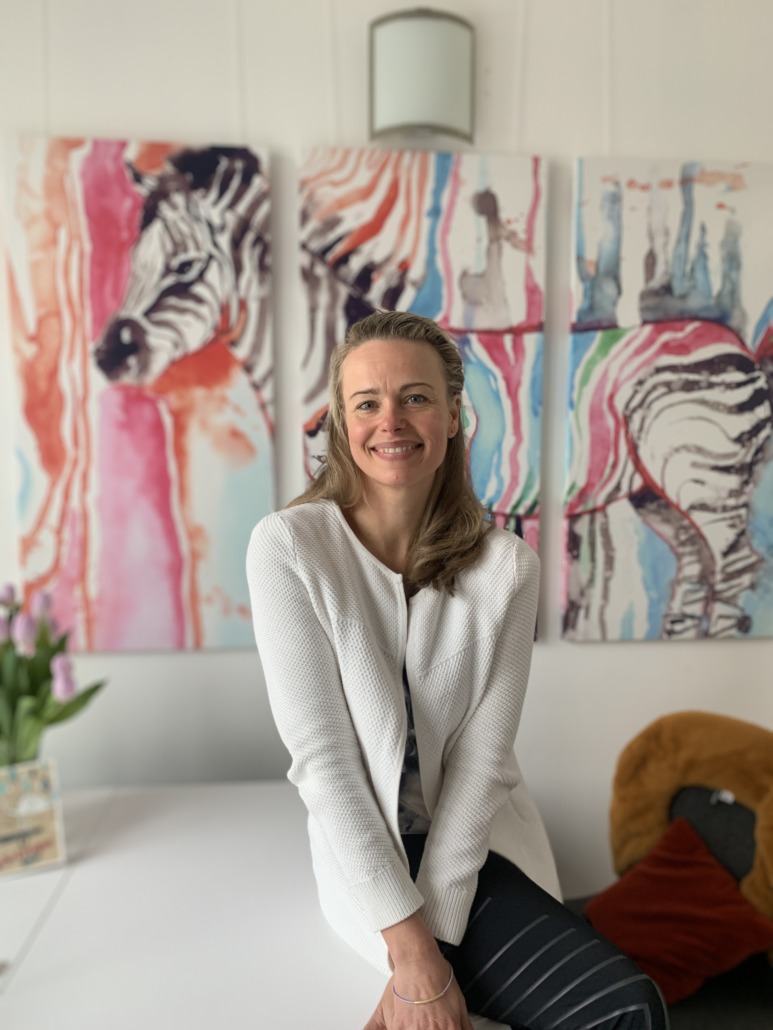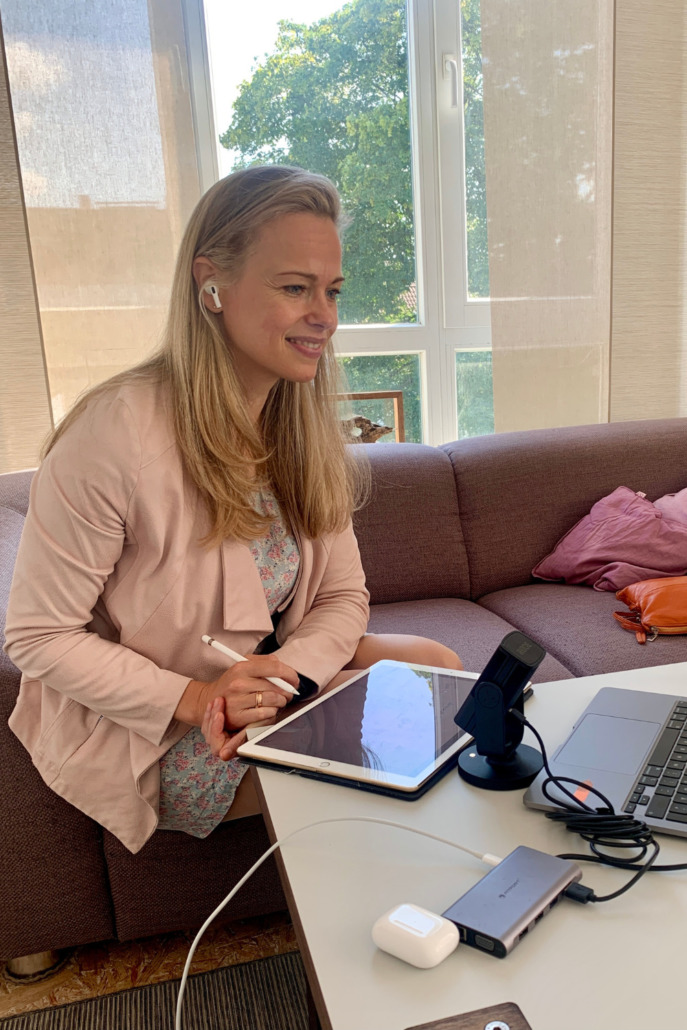Find colourful zebras and feed their needs
Why diversity is a fertile ground for innovation
Contents:
What is diversity: richness and abundance
Colourful zebras and where to find them
Colourful zebras in disguise – different expressions used for them
Where to find colourful zebras?
The right way to work with colourful zebras
Where do colourful zebras hang around?
A lot different: Polywork, the perfect network for colourful zebras
Diversity and communication: colourful zebras can help
Colourful zebras are capable of contributing to the solution of many complex problems of our time. If they are allowed to develop their full potential, that is. And especially if companies identify and promote them.
The majority of German companies are currently under enormous pressure to innovate if they want to compete internationally and remain relevant in the future. In addition, the corporate culture is weakening in many companies, the mental health of employees is suffering from the consequences of the pandemic, and finding competent employees and inspiring them for the company is increasingly difficult.
I’m convinced that the complexity of the digital transformation can’t be solved on a fixed scale, relying solely on standards or guidelines. Instead, we need to acquire new skills and embrace new ways of thinking to remain innovative and thus attractive for employees.
Diversity can play a clearly decisive role in innovation and development in companies. But what exactly does diversity mean and how can it contribute to prepare the ground for innovation in companies? Can the answer to the complex questions of our time possibly be found in the mysterious colourful zebra?
“We need people who aren’t just computer-literate, but who also know how to control them and are up to the complexity of this task. People who can manage networked projects in distributed teams, make meetings productive, lead, research, coach and inspire others. We need creativity, humour, initiative and a sense of community.” Gunter Dueck
Could colourful zebras be the need of the hour? In this article I canvass what exactly a colourful zebra is and why it’s worth it to specifically recruit and promote them for your company and what diversity has to do with it all, respectively.
This article is dedicated to people in management positions and personnel developers who aren’t content with the status quo and are in search of “innovation fodder”. Curious people and visionaries alike who like to learn and research how they can provide their superiors an insight into the benefits of diversity. Or perhaps recognise themselves as a colourful zebra. If you’re reading on, I seem to have found the right person.
What is diversity: richness and abundance
We live in a world in which the variety of life forms increases steadily. According to the Duden, diversity means: the richness of different species, forms or the like in which something specific is present, occurs, becomes manifest; great diversity
. Richness sounds rather pleasurable, don’t you think?
Diversity is many-faceted
Variety, richness and diversity can occur on all three levels on which I operate as a systemic d-coach – which of course are all related and should definitely be in close dialogue, for example in the form of expert groups and communities.
Networking
For a start, there’s diversity on organisational level, among teams, like varying expertise, specialities, knowledge, technical know-how, but also among the leaders in the organisation. The more heterogeneous, self-directed and better networked they are, the more emergent is the value created for the customers. Emergence here means the development of new properties, processes or states from the interaction of individual elements (e.g. people) in a complex system. In other words, the potential for innovation is closely associated with the ability to develop or allow emergent structures. This in turn is closely connected to the diversity existing within the system.
Diversity in a team
At the next level, there’s interpersonal diversity, i.e. within a team. For instance, there are different identities, competences, strengths and responsibilities. This is often referred to as diversity.
Diversity targets the recognition and appreciation of all people regardless of their social, ethnic etc. origin, their gender, their age, their sexual orientation, religious beliefs, their socio-demographic features (e.g. parenthood) or their worldview, their physical or psychological capacities or other characteristics.
However, this doesn’t only concern the differences of people and their life plans, but always the discovery of commonalities, too. People can have different ethnic origins or religions and worldviews, but be the same age, lesbian and a mother, or have the same physical abilities and impairments.
Multi-passionate personalities
Last but not least, there’s the personal level. On this level, diversity takes place intrapersonally, i.e. within an individual. Multi-passionate people combine a wealth and variety of interests and talents. Enter the concept of the colourful zebra! In a colourful zebra, due to the multi-facetted topics and their depth you often find an excellent feeling for innovation. What’s more, they are empathetic bridge builders and thus a true asset to any team.
But where do you find them?
Colourful zebras and where to find them
When and by whom exactly the term “colourful zebra” was coined in the context of personal development isn’t one hundred percent clear, but the book “Außergewöhnlich normal: Hochbegabt, hochsensitiv, hochsensibel: Wie Sie Ihr Potenzial erkennen und entfalten” by Anne Heintze has made a key contribution to the success of the innovative word creation. To her, colourful zebras are people who stand out from the crowd because of their highly gifted and highly sensitive personality structure. However, to catch and keep them in a herd, or worse: in a Haflinger herd , so that they learn how to become a better horse, can easily backfire according to Heintze.
 The keen sense for innovations therefore seems to go along with fine senses and the phenomenon of high sensitivity, which I would like to specify here.
The keen sense for innovations therefore seems to go along with fine senses and the phenomenon of high sensitivity, which I would like to specify here.
In the mid-90s, the phenomenon of high sensitivity was scientifically researched and intensively documented by the North American psychologist Dr. Elaine Aron. In everyday language, high sensitivity is a trait and is referred to as a trait or characteristic of the personality or temperament in science.
Highly sensitive people display an increased responsiveness to environmental stimuli than others. They process information in a deeper and more differentiated way than less sensitive people. In addition, experiences resonate longer with them. This means that their entire system is always “on” and dialled up. Having to face the usual daily stressors and the pressure to adapt to their environment claim and bind additional resources. However, the negative aspects of high sensitivity are mostly in the spotlight in scientific literature. Dr. Aron is nonetheless convinced that this rather widespread trait must also come with adaptive advantages, because otherwise it would have been lost through natural selection in the population (Aron 2014).
Typical traits and characteristics that highly sensitive persons bring to the table include a complex imagination, perfectionism, creativity, need for harmony and a high level of empathy.
If we apply this to a colourful zebra, it becomes clear that being a colourful zebra can be both a great asset and a challenge. And also why some have to assimilate themselves greatly or refrain from going into such a complex system as a company in the first place and prefer being self-employed instead. But more on that in a moment.
Colourful zebras in disguise – different expressions used for them
Colourful zebras are people who usually don’t seem to fit into any common professional title or who have so far been able to disguise or adapt themselves extremely well. Here’s a list of different expressions associated with colourful zebras
- multipassionates
- scanners
- generalists
- multipotentialites
- multi-talent
- forward thinker (formerly known as lateral thinkers)
- visionaries
- universalists
- out-of-the-box thinkers
- Renaissance souls
Anne Heintze, an expert on giftedness, is convinced: “They are (…) universalists with mostly non-linear life histories and who shut themselves off to the mainstream. Big names such as Leonardo da Vinci, Aristotle and Hildegard von Bingen rank among the old representatives of this species, but it’s also renowned personalities like Clint Eastwood, Richard Branson, Steve Jobs, Barbra Streisand, Peter Ustinov and Selcuk Cara who are appreciated for their “main work” around the globe, while they, at the same time, are highly gifted multi-talents who are also regarded as successful all-rounders.”
Because highly sensitive people often tend to be creative with a pronounced fantasy, many of them opt for art and creative professions.
In fact, some famous forward thinkers, such as Leonardo da Vinci, were considered as being crazy by their contemporaries. Even da Vinci was more than a highly gifted artist: he was a natural scientist, architect, engineer, astronomer, inventor and visionary. It’s often the case that people’s genius is only acknowledged afterwards. And the same applies to innovative ideas.
„Every good idea is logical in hindsight, but in order to get there you have to change your line of thought.“ Edward de Bono
That’s why colourful zebras, who live up to their full potential, are not only visionaries but also non-linear thinkers. They can identify patterns and correlations more quickly than usual and make complexity tangible or simply visualise it well.
All jobs that require unconventional approaches, new ways of thinking, visions and breaking with the mould are creative professions. Highly sensitive people have a great ability to empathise with their clients: They have a keen sense for interpersonal relationships and can put themselves in the other person’s shoes. They listen attentively and can sometimes better assess what suits their clients’ needs. And this offers great potential that’s being recognised by a burgeoning number of HR departments.
„If you’re always trying to be normal, you will never know how amazing you can be.“ (Maya Angelou)
Many of them are leaders who explore new grounds for others, who don’t mind detours. Never giving up and risking breaking their bones, firmly believing that they will heal, or even more, get stronger. Nassim Nicholas Taleb calls the principle behind this: antifragility. “If you look for detours, and you embrace disruptions because their result is always welcome, then you are antifragile,” says Taleb.
Neither Steve Jobs nor Leonardo da Vinci would have made it as far as they did, if they hadn’t remained true to their path, resisting the influences of other people, or they wouldn’t have made their way out again, if it had led to a dead end or someone had put obstacles in their way.
In doing so, it’s important to harness synergies and to develop technology that presumably doesn’t exist at the time but that everyone wants. Antifragility and other skills attributed to the colourful zebra are resources that are invaluable with regard to innovation.
Take my example back in the days as IT consultant – and a colourful zebra in disguise: my task was to develop an eTicketing system with my team in Hamburg. We didn’t know how it would work because there were hardly any blueprints. So we were moving in the dark with just about everything. Would the outcome be positive? Would our system be accepted? But we were willing to go down that road and explore that. To achieve true innovation, it took creative minds with pronounced imagination who were capable of visualising what would be mould-breaking. And above all, a diverse team that brings enough different skills to the table to address the task, as well as good information sharing on organisational level. Today, what we dreamed of back then is standard in practice.
Where to find colourful zebras?
For a start, it is well worth taking a look at your own company. I’m profoundly convinced that there are more of them than actually come to light. Colourful zebras in disguise often adjust to the “herd” at the beginning and many demonstrate a readiness of mind. If a usually very productive team member starts to deliver less, makes more and more mistakes, calls in sick more often and seems altogether reserved or resigned, it might be worthwhile as a leader to look into this. That obviously applies to everyone: because if one part of the team isn’t fit to work, it can adversely affect the working ability of the entire team.
According to Elaine Aron, colourful zebras make up approx. 15-20% of the population. So the person described above could very well be a colourful zebra kept on a short leash. For as soon as they have to work below their potential, e.g. in very monotonous jobs or above their tolerance level to sensory input, i.e. they are faced with very stressful and energy draining conditions, not only does their productivity drop, but they can also become seriously ill. Which brings us to the next important point in dealing with scanner personalities.
The right way to work with colourful zebras
What kind of environment could be suitable for colourful zebras to reach their potential? Once it has been identified, it is a matter of designing their workplace so that they feel comfortable, free from distraction, and they can develop freely and flexibly.
“Developing potential can only mean that you exceed yourself together.” Gerald Hüther
Not many colourful zebras have an employer who promotes their qualities. Only a handful of companies are smart enough to give their special employees the assurance that their talents and ideas are recognised and valued, thus paving the way so that they can realise their full potential.
Requests for training are also key to providing the right space for colourful zebras. Flat hierarchies, agility, self-organisation, i.e. trust and communication on a level playing field, are things that allow highly sensitive people to bring out the best in themselves.
Whereby the overall conditions obviously are vital for almost every employee and thus provide a fertile base for innovation and a healthy corporate culture. In essence, this is what has been subject to discussions for a few years under the New Work approach.
“Only if all employees can develop their talents can this act as a catalyst for a wide range of new ideas and thus for sustainable success.” Milagros Caiña-Andree, Board member BMW Group
Team exercise
A simple yet very helpful exercise for you as a leader to celebrate being “colourful” with your team and discover valuable hidden talents and skills is to visualise and reflect together on the whiteboard, e.g. in a retrospective.
A possible question could be: what new things have you tried in the last four weeks and what have you learned about yourself?

And yes, this is not only reserved for live meetings, but can easily be integrated in an online setting. My tool tip for you: MS Whiteboard, Miro or Mural.
So-called retrospectives held on a regular basis are the key to joint learning in the organisation. It is advisable to involve external facilitators so that the team can concentrate on itself.
Where do colourful zebras hang around?
As mentioned above, colourful zebras are very freedom-loving and many opt for self-employment on a full-time or part-time basis due to bad experiences made in the past during permanent employment. As a professional self-employed, they find optimal conditions to develop freely. Is this potential beyond reclaim? No, because it’s worth taking a look at freelancer portals. Many zebras are bustling and quite prepared to contribute their expertise to companies as part of a temporary consultancy or support service. Here is a selection of popular platforms and portals:
HR professionals can also make a find in social or professional networks with, first and foremost, the classics Xing and the global player LinkedIn. But there are also developments and innovations evident that meet the changing individual needs of the professional world.
A lot different: Polywork, the perfect network for colourful zebras
The latest addition to networking platforms is the social network Polywork, which offers very interesting approaches especially for the technology sector. Polywork focuses on projects instead of titles and career milestones. According to founder Peter Johnston, he believes that the depiction of cohesive and stringent CVs no longer represents the work reality of many people, especially young people. For one thing, they change jobs more often. For another, this representation doesn’t reflect the fact that they work in several roles and positions, quite often in different organisations, at the same time. This conviction has driven him to create his own career network. It’s name clearly indicates what it’s all about: “Poly” derives from the Greek and means “much”, “more” and “different”. The perfect environment for colourful zebras, so to speak. Because colourful zebras and multi-talents are those who can’t be pigeonholed and often “fall through the cracks” because their life story isn’t straightforward and clear-cut, but “colourful”, “diverse” and full of detours.
Diversity and communication: colourful zebras can help
Furthermore, companies facing the challenge of a skills shortage and innovation pressure are well advised to put the issue of diversity right at the top of their agenda, both internally and externally, and thus also to incorporate it in their communication. In any case, it’s necessary to get a feel for it. Besides the New Work aspects, issues like diversity and employer branding also matter.
Here again, colourful zebras can help to empathise with the applicants’ needs in order to address them on an emotional level.
One of my clients from my home country of Austria demonstrates, what a playful approach to diversity in external communication could look like. The headline of the #zusammenhalten initiative is:
“What do you need to travel with Wiener Linien? Just a ticket and respect. Discrimination has no place with us.” The matching picture shows several hands in different skin colours and from different age groups holding on to straps.
Wiener Linien does not tolerate discrimination, racism or homophobia; around 8,700 Wiener Linien employees come from 36 nations. Diversity is one of their strengths, and they advocate Vienna’s commitment for more diversity and equal opportunities.
“We are convinced that Vienna’s economy benefits from entrepreneurs that draw on their diverse life experiences and backgrounds to develop innovative ideas and also implement them successfully.” Eva Czernohorszky, Gender and Diversity Representative, Wiener Wirtschaftsagentur
Diversity, here again, is recognised as a potential for innovative ideas and used consciously.
Bring out the colourful zebra in you
If you have read this far, you’ve already worked out whether you’re a colourful zebra yourself or whether you want to introduce colourful zebras to your team. Even if you think you don’t qualify as highly sensitive, there are still a number of things you can do to develop your full potential. You can follow aspects of New Work and other trends that break with customary sequences and promote unconventional thinking.
Find the colourful zebras, and set them free
It has long ceased to be a secret that we are in urgent need of new skills and unconventional approaches, if we want to stay truly innovative and thus attractive for employees in the future. New generations in particular aspire diversity, variety and other aspects that are at the forefront of the New Work approach. As it turns out, diversity can be a driving force behind innovation. This stems from the recognition and appreciation of diversity and individuality.
But diversity is not only crucial for innovation and potential development on organisational and team level, but also intrapersonally.
This is where I brought the colourful zebra into play. They are often undiscovered multi-talents who can only develop their real potential when they work in a favourable environment and thus can thrive to make a difference.
Colourful zebras provide many essentials that companies urgently need for the resolution of complex problems. Because they are far-sighted, perceive things that go unnoticed by others, understand complex issues and can empathise well with changing requirements or needs, e.g. of customers. Because they are an asset to any team if they can move freely and are in an environment that allows them to develop their potential.
However, if you try to constrict colourful zebras in their freedom or pigeonhole them, not only will they become ill, you will also miss the chance to achieve the company’s vision by benefitting from their potential. What’s generally true for young employees is especially true for colourful zebras: if you don’t create a healthy environment and an appreciative working atmosphere in which they can develop and move freely, they will move on or become ill.







